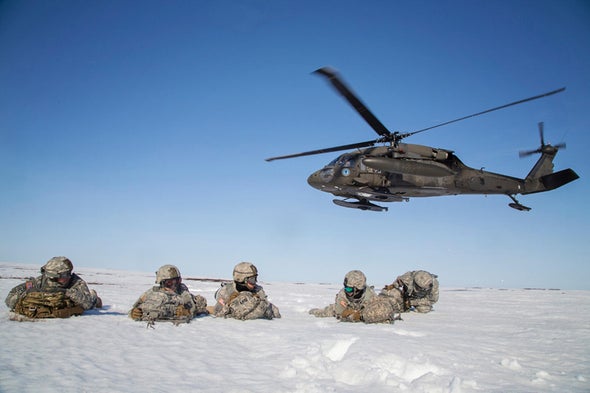Deputy Secretary of Defense Kathleen Hicks visited Alaska this week to see how climate change is undermining infrastructure at Arctic military bases

That’s not the only concern. Melting Arctic sea ice is opening new shipping lanes, and that’s attracted the notice of China and Russia, two of America’s biggest geopolitical rivals.
“The Arctic is incredibly strategically important. We can reach just about any theatre in the northern hemisphere from Alaska,” Pentagon spokesperson Eric Pahon, who is traveling with Hicks, said in a telephone interview. “We have to be able to operate and support (military personnel and assets) in those theaters.
Defense readiness also involves adapting military vehicles to operate in variable conditions ranging from extreme cold to extreme wet. “We’ve seen what the effects of an early spring thaw can do in Ukraine,” said Pahon, referring to muddy conditions that have slowed troop and vehicle movement.
Robert McCoy, director of the Geophysical Institute at the University of Alaska, Fairbanks, which was created by Congress in 1946 and works closely with the Defense Department on environment and climate issues, said that beyond thawing permafrost — which may be the Pentagon’s most immediate problem — DoD assets also are affected by shoreline erosion and more frequent flooding.
Also buildings, pipelines and other infrastructure built atop pilings require what’s called “passive refrigeration” to keep thawing permafrost from destabilizing the structures.
“The Air Force is spending a lot of money in Alaska to deal with this problem,” McCoy said. “There’s two F-35 [advanced fighter] squadrons at Eielson [Air Force Base] and a half-billion dollars in investment to host those squadrons,” including 36 new buildings and 54 aircraft hangers, according to the Defense Department.
During her visit, Hicks also stopped by the Ted Stevens Center for Arctic Security Studies to learn how experts are advancing U.S. interests through new security and research partnerships with other Arctic nations. Officials at the Stevens Center declined to comment on the visit, citing Pentagon media policies.
Pahon said those regional partnerships will allow the U.S. to learn from allied nations about optimizing base operations and mission readiness in the polar region.
“Some of the questions we’re trying to answer is: ‘How do you get an F-35 to safely fly in below-50 degree temperatures?’ [And] ‘what happens to an Abrams tank when you take it out into 50-below weather and try to fire it?'” he said. “There’s a lot of great training already happening up here, but we can always learn more from our regional partners.”
Reprinted from E&E News with permission from POLITICO, LLC. Copyright 2023. E&E News provides essential news for energy and environment professionals.
ABOUT THE AUTHOR(S)
Daniel Cusick covers climate change adaptation and resilience. He joined E&E News in 2003 and has filed news stories from South Florida to Northern Minnesota. He has reported from more than a half dozen hurricane recovery zones and documented climate change impacts, resilience and energy transitions in East Africa. He lives in Minneapolis.


